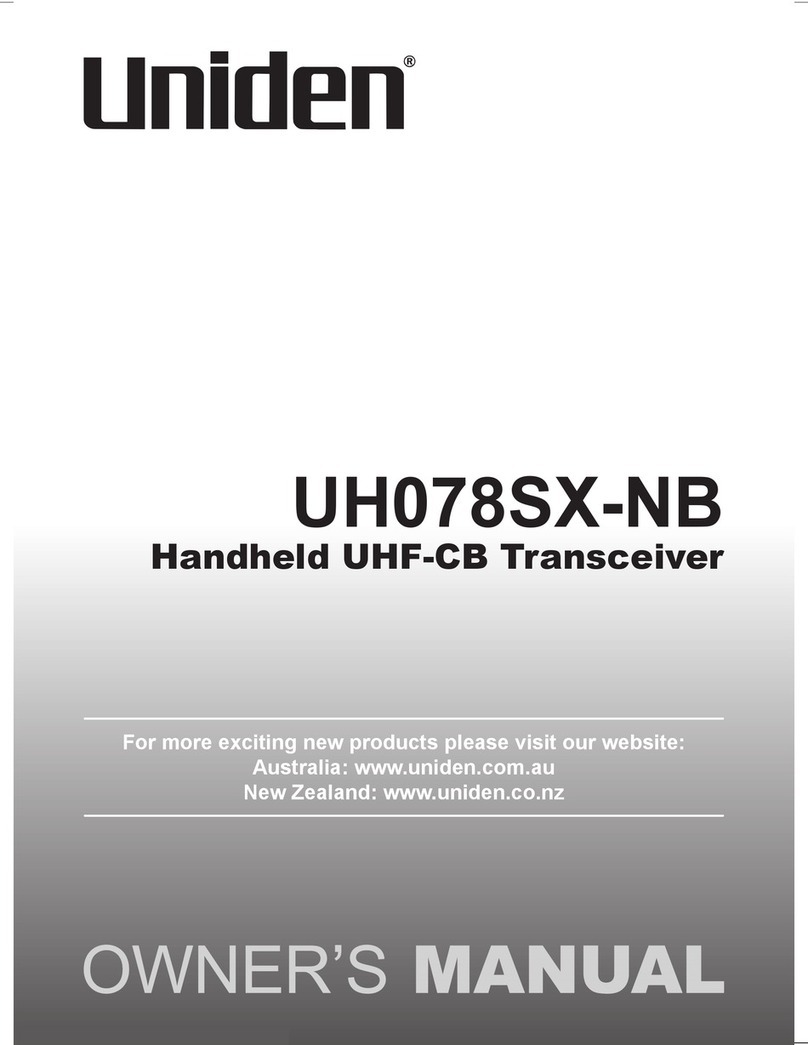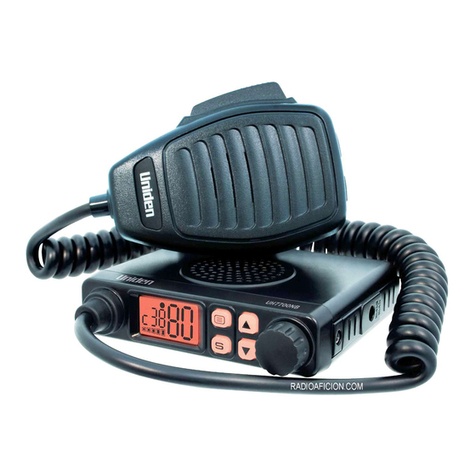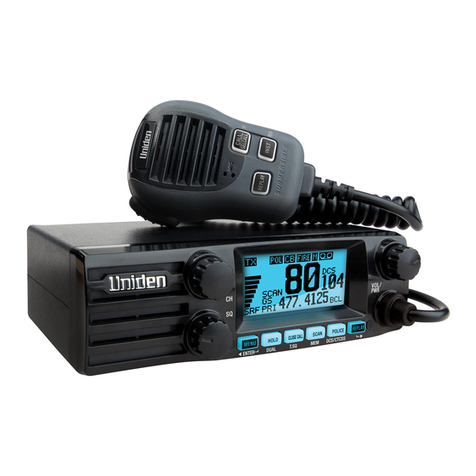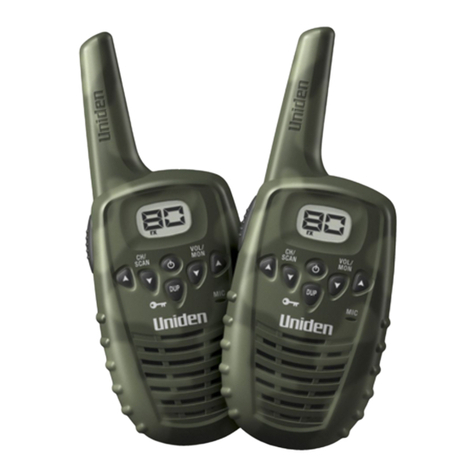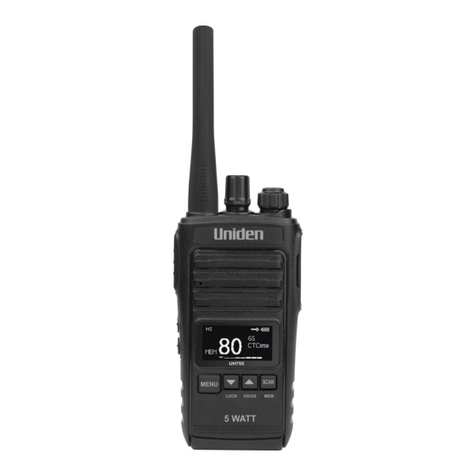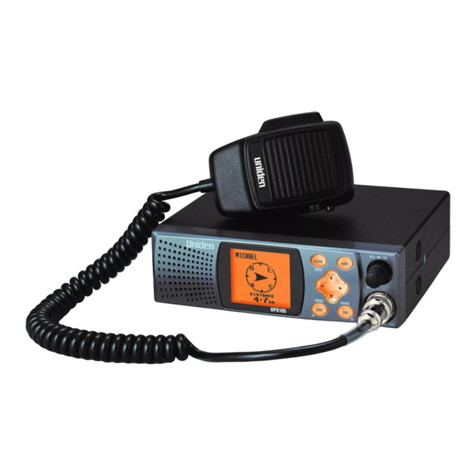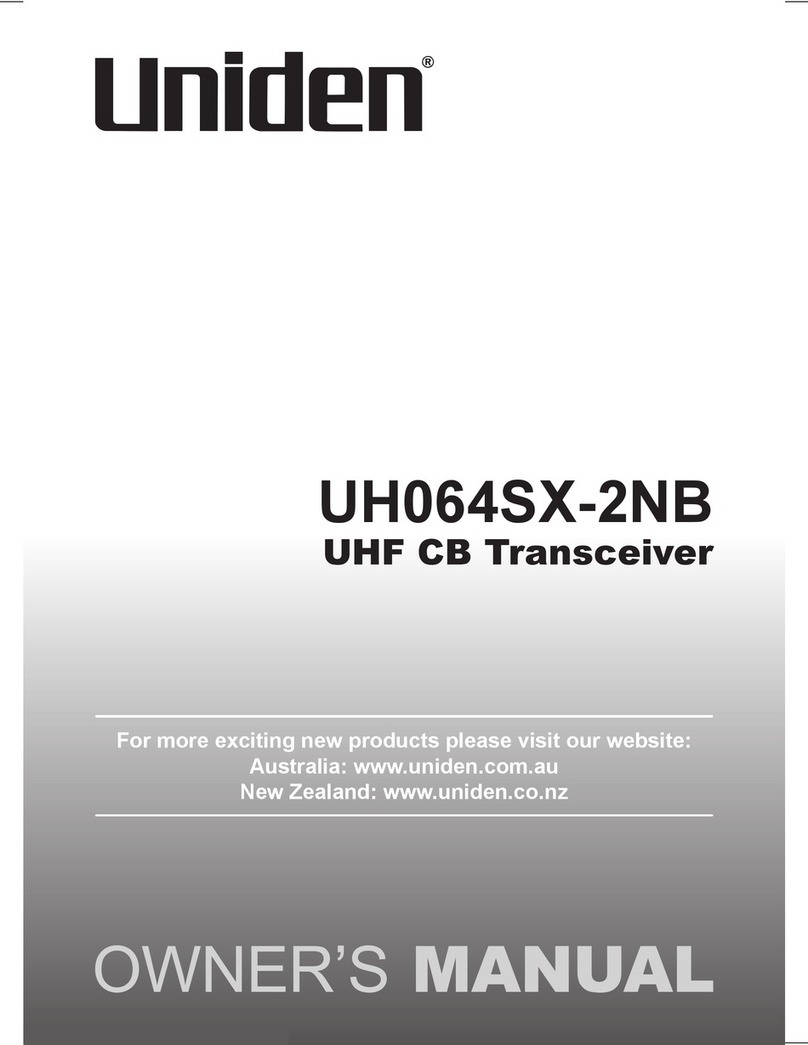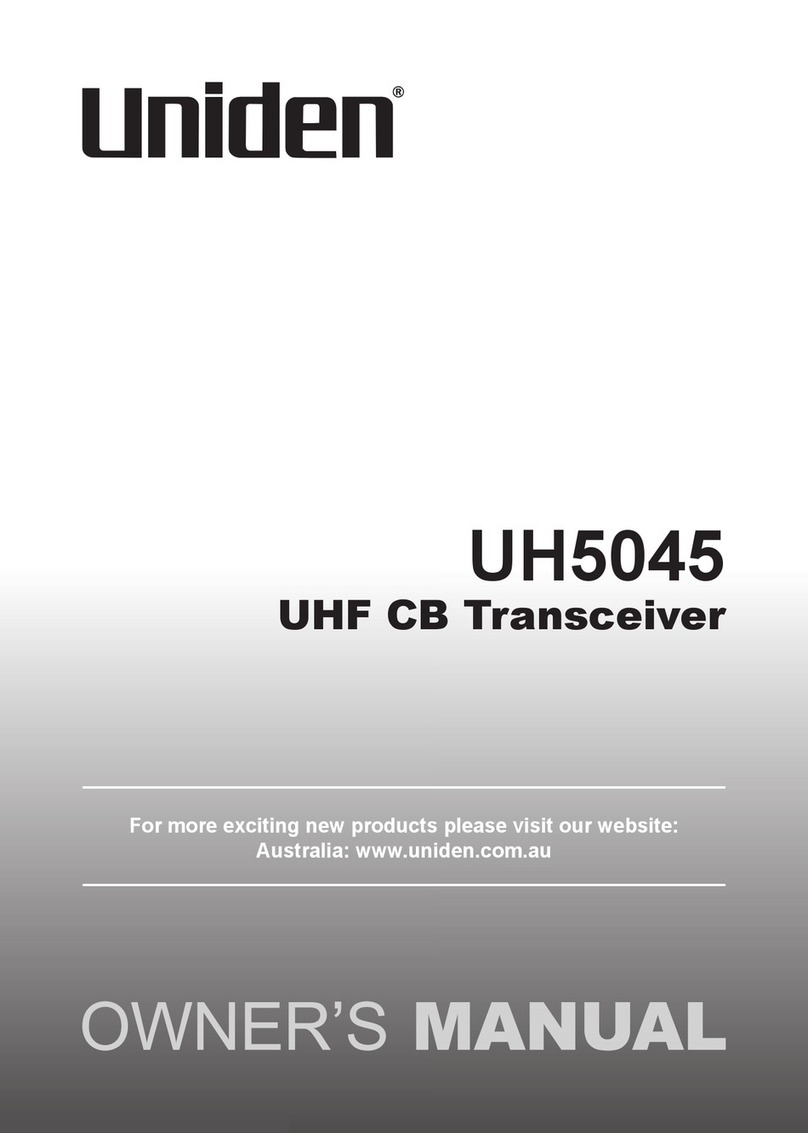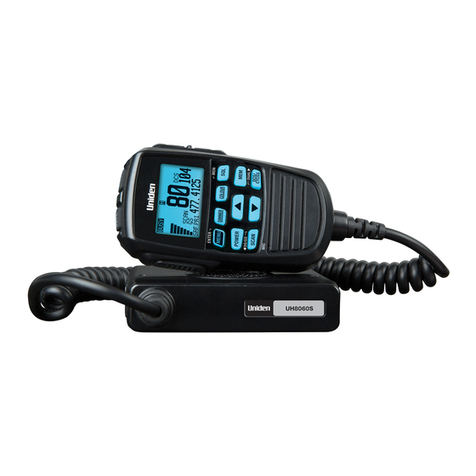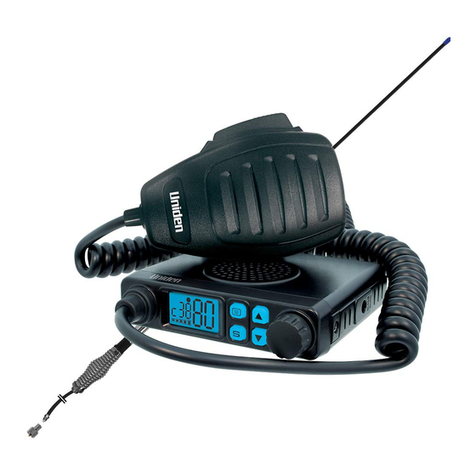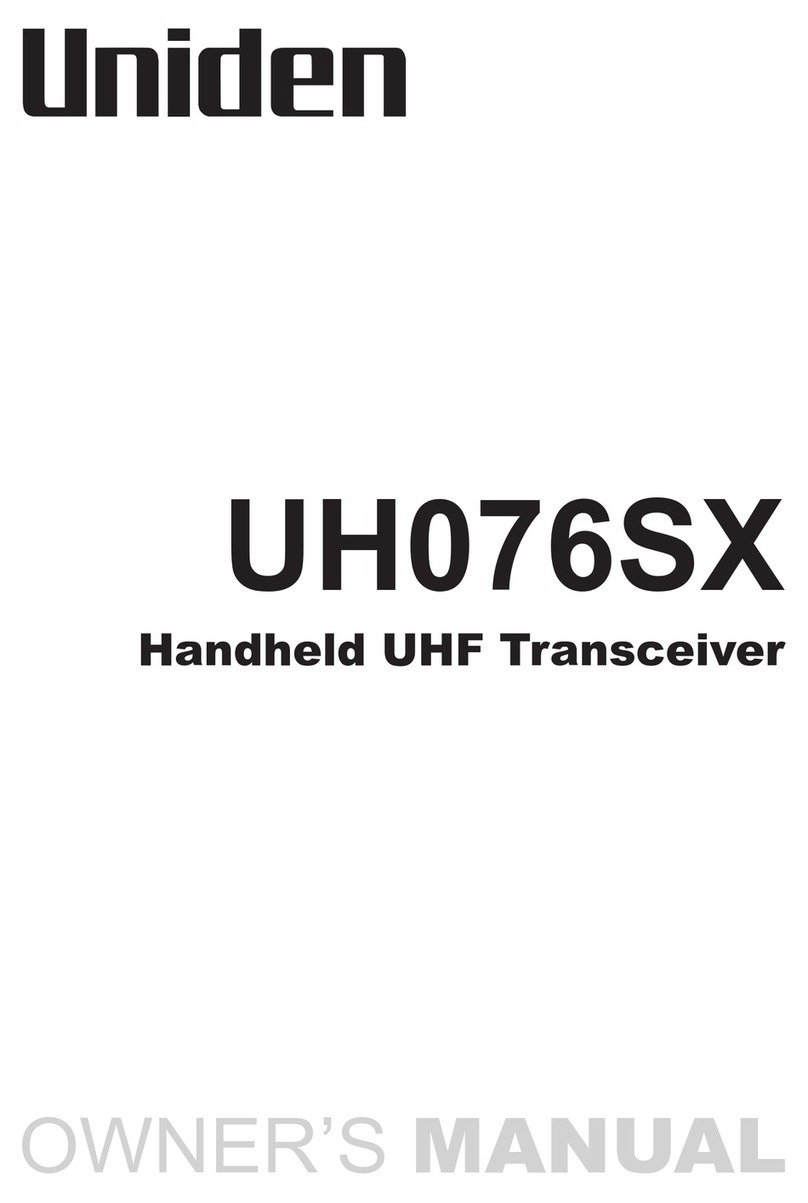
The Uniden X66 is designed to provide you with years of trouble
free service. Its rugged components and materials are capable of
withstanding harsh environments. Please read this Operating Manual
carefully to ensure you gain the optimum performance of the unit.
NOTE
The citizen band radio service is licenced in Australia by
ACMA Radio-communications (Citizen Band Radio Stations)
Class Licence and in New Zealand by MBIE General User
Licence for Citizen Band Radio and operation is subject to
conditions contained in those licenses.
Features
• Narrow Band (NB) 80 Channel
Radio*
• Mini Compact Black Box
• Remote LCD Speaker
Microphone (Remote SPK/MIC)
and Extension Cable
• 12V DC Power Input
• Built-in AVS Circuitry†
• Transmission Power 5W
• LCD Display with Backlight
• LCD Backlight brightness control
(“HI”, “LO”, “Off”)
• Signal Strength/ Power Meter
• Instant Channel Programming
• One touch Instant Channel recalling
• Dual Watch with Instant Channel
• Duplex Capability*
• Master Scan
• Group Scan and Priority Channel
Watch
• Open Scan
• Scan Channel Memory On/Off
separately with Open Scan,
Group Scan
• Channel Select
• Busy Channel Lock-out Function
• Roger Beep Function On/Off
• 5 Different Call Tones
• 38 Built-in CTCSS (Continuous
Tone Coded Squelch System)
and 104 additional DCS (Digital
Coded Squelch) codes that are
user selectable
• Volume Control
• 7 LCD & Key Backlight Colours
• Base Speaker
• External Speaker Jack
• Power On/Off Push Switch
• Front MIC Jack
• Auto Squelch
• Under and over voltage alert
function
* Refer to p.31 - p.33 for channel
information
†AVS - Automatic Volume Stabilizer
detects and manages incoming
audio to comparable levels.
3
Introduction
UHF CB TransceiverUNIDEN X66

